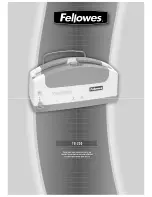
Figure 25
1.
Filler neck
2.
Dipstick
3.
Remove the dipstick and wipe off the oil with a clean
rag.
4.
Insert the dipstick into the filler neck, rest it on the oil
filler neck, and turn it counterclockwise until the cap
drops down to lowest point of the thread leads.
Note:
Do not thread the cap onto the tube.
5.
Remove dipstick and check oil level.
Note:
Do not operate the engine with the oil level
below the Add mark or above the Full mark on the
dipstick.
Note:
The oil level should be at top of the indicator
on the dipstick (
•
If the oil level is low, perform the following:
A.
Pour the specified oil into the filler neck
(
Note:
Do not overfill the engine with oil.
B.
Repeat steps
through
•
If the oil level is high, preform the following:
A.
Remove the cap from the drain fitting.
B.
Drain the oil until the oil level is at the top of
the indicator on dipstick; refer to steps
of
Changing the Engine Oil (page 21)
.
C.
Install the cap onto the drain fitting; refer to
step
of
Changing the Engine Oil (page 21)
.
6.
Insert the dipstick into the filler neck and tighten the
dipstick by hand.
Changing the Engine Oil
Service Interval:
After the first 5 hours
Every 100 hours (more frequently in severe
conditions).
Oil capacity: 0.60 L (0.63 qt)
Note:
Drain the engine oil while the engine is warm.
1.
Place a pan under drain fitting and remove the oil-drain
cap (
Figure 26
1.
Drain fitting
3.
Drain pan
2.
Cap
2.
Allow the oil to drain and then install the oil-drain cap.
3.
Clean around the filler neck and remove the dipstick.
4.
Fill to the specified capacity with the specified oil and
replace the dipstick; refer to
.
Note:
Do not overfill the engine with oil.
5.
Wipe up any spilled oil.
6.
Start the engine and check for leaks.
7.
Stop the engine and check the oil level; refer to
Checking the Engine-Oil Level (page 20)
.
21












































